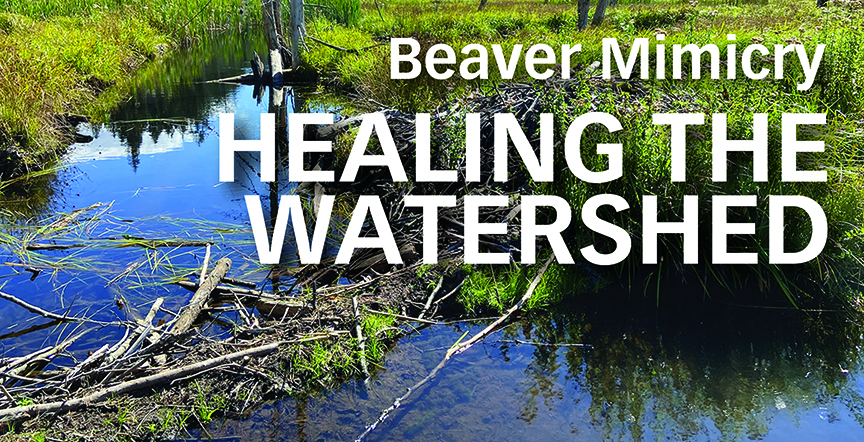
Beaver mimicry is a surprising new approach to restoring watersheds. Beavers have long been considered a nuisance species and problematic, but today there is an increased awareness of the positive effects their dams have on the environment. Beaver dams slow stream flow, decrease flooding, help develop wetlands, increase riparian vegetation, decrease erosion, and augment habitat for other species such as birds. Oftentimes, watching other species teaches us how to work with nature.
Beaver Dam Analogs (BDAs) are human-made dams that are carefully situated in a degraded stream. Wooden stakes are placed vertically and then willow or other brush is woven between them, allowing water to flow through the dam. A BDA slows the speed of water during times of high runoff and also allows water to be stored behind it, increasing groundwater recharge. Professional engineers adopt this strategy when they build weir dams – small dams built across a river to control upstream water levels. Riverscape Restoration photos from the Rio Grande Return website shows a stream with these dams in northern New Mexico. Currently, there are no beaver mimicry projects underway in the mid Rio Grande Watershed.
BDA is the fastest growing stream restoration technique in the American West and is used by wetland managers, ranchers, the Forest Service, and Bureau of Land Management among others. There are now manuals for design of BDAs developed by researchers and government agencies, training workshops, and videos on how to construct one. (beaversww.org/articles-2/). And go to Beavers: Wetlands & Wildlife for many fascinating articles on beavers.

